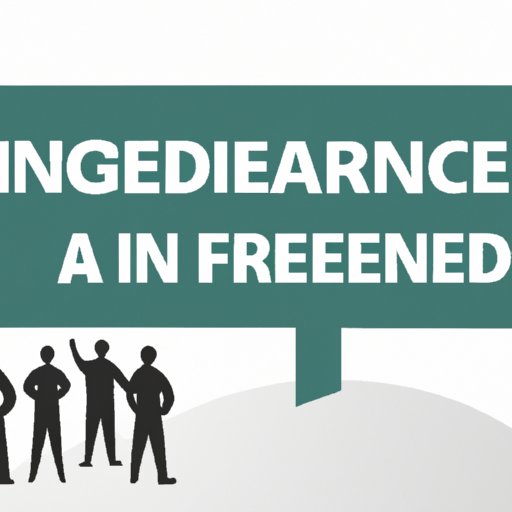
Introduction
Unrestricted free agency is a term often heard in the world of sports. Whether you are a fan, a player, or a team manager, it is essential to understand the implications of unrestricted free agency. In this article, we will explore in-depth all things related to unrestricted free agency, including what it is, how it impacts the sports world, and some of the most significant free agency decisions in recent years. By the end of this article, you will have a complete understanding of this crucial aspect of sports.
Understanding Unrestricted Free Agency: What it Means and How it Impacts the Sports World
Unrestricted free agency is a term used in sports to describe a player who is free to sign with any team in the league without any restriction from his current team. This means that the player is not under any contract with his current team, and he is free to negotiate with other teams on his terms.
Unrestricted free agency differs from other forms of free agency, such as restricted and exclusive rights free agency. In restricted free agency, the player is under contract with his team, but his team can only match the offers of other teams to retain the player. In exclusive rights free agency, the player is free to sign with his current team, but no other team can negotiate with him.
Many high-profile players have become unrestricted free agents in various sports, including Lebron James in basketball, Tom Brady in football, and Bryce Harper in baseball. These players’ decisions to become free agents have significant implications for team building strategies, player salaries, and league competitiveness.
The Game of Contracts: An In-Depth Look at Unrestricted Free Agency
One critical factor that affects unrestricted free agency is the salary cap. The salary cap is the maximum amount a team can spend on player salaries in a given season. Many leagues have a salary cap to maintain a level of competitiveness among teams.
Unrestricted free agents can sign various kinds of contracts with their new teams, including short-term contracts, long-term contracts, and incentive-based contracts. The terms of the contract determine how much money the player will make and how long he will play for that team.
Some of the most lucrative unrestricted free agent contracts in sports history include Kevin Durant’s contract with the Golden State Warriors and Gerrit Cole’s contract with the New York Yankees. These contracts are worth millions of dollars and have significant implications for both players and teams.
One of the significant challenges that teams face when signing free agents is competing offers. Often, several teams make offers to the desired player, making it challenging to predict where the player will sign. Additionally, timing is crucial, and teams must make offers quickly enough to stay competitive but not prematurely or risk overpaying for a player.
Breaking Down Unrestricted Free Agency: A Guide for Fans, Players, and Teams
The free agency process follows a particular timeline in each league. Depending on the league, the free agency process may begin immediately after the season or several weeks after. The Players’ union and team managers work together to determine the exact timeline and process for free agency.
Agents are essential in free agency negotiations as they work closely with players and teams to negotiate contracts and terms. Agents help players understand the different offers they receive, and they work to get the best possible deal for their clients.
When deciding to sign with a new team, players and teams consider multiple factors. Money is, of course, a significant factor, but location, team culture, and the potential to win a championship are other important considerations.
Unrestricted Free Agency 101: Everything You Need to Know
Each league has its own rules and regulations surrounding free agency. For example, in the NFL, a team can use a “franchise tag” to keep a player for a year without giving him a long-term contract. In the NBA, players have the option to sign a “player option” contract that allows them to choose whether to play for an additional year with the current team.
Some of the most significant free agency decisions in recent years include Lebron James’ decision to leave the Cleveland Cavaliers and sign with the Miami Heat and Kevin Durant’s decision to join the Golden State Warriors. These decisions have had significant impacts on the teams involved and the league overall.
The Pros and Cons of Unrestricted Free Agency: Is It Fair for Players and Teams?
The advantages of unrestricted free agency for players include the ability to choose where they want to play, the ability to negotiate better contracts, and the potential to win a championship. For teams, some of the disadvantages of free agency include the loosening of team culture and higher salaries for players.
Sports leagues try to balance the needs of players and teams when it comes to free agency. For example, leagues may implement a salary cap to maintain a level of competitiveness among teams, and they may have specific rules that encourage players to stay with their current teams.
Conclusion
Unrestricted free agency is a crucial aspect of sports that players, teams, and fans must understand. By understanding free agency, you can enjoy the game more fully and appreciate the decisions made by players and teams. Although there are pros and cons to unrestricted free agency, sports leagues continue to evolve and adapt to ensure the fair treatment of all parties involved.




